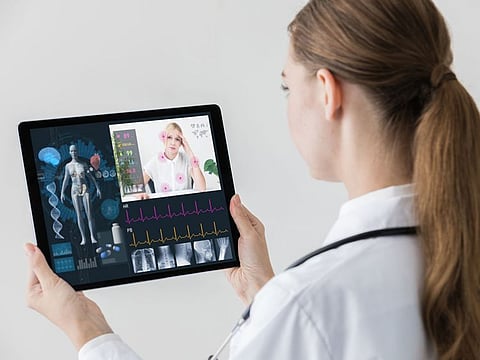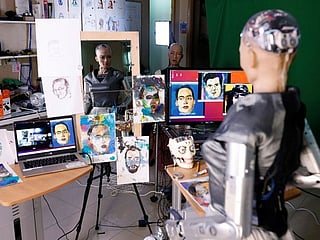UAE's healthcare sector will not be immune to remote working ways
But upskilling staff to pick up these new ways at the earliest will be challenging

As restrictions ease, the wheels of industry are turning again as the world slowly edges back to normality.
At first glance, it doesn't seem as though the healthcare industry is primed for a widespread migration to remote working. After all, healthcare professionals have to see patients in person to adhere with regulatory-mandated patient privacy and information security requirements.
Well, the good news is that some healthcare staff can absolutely be on remote working, provide patient service support, and comply with industry regulations. However, hospitals must evaluate the specific roles that can work effectively even remotely, set clear expectations, and enable them with the right tools and technology to do so.
Learn fast enough?
Conventionally, the surgeons, nurses, technicians and many other staff can only do their jobs within a hospital's walls. Another aspect complicating the equation here are the staff members — especially those who have spent the majority of their careers in the healthcare field — and may not be familiar with remote working’s best practices, etiquette, and policies.
Healthcare organizations know they cannot risk a catastrophic event, such as a ransomware attack, against a hospital or any other facility that is providing critical care during this crisis. Secure remote working has been a top priority, and organizations are taking it seriously, deploying threat protection on every device that accesses healthcare networks, apps and data.
Migration to offsite
A closer look at the profiles in a hospital reveal that many healthcare workers support patients - but don’t treat them directly. There is the support and administrative staff, and other nonclinical healthcare positions like IT, HR, marketing, staff training, etc., can be readily transitioned to remote working.
Additionally, many hospitals have added telehealth to their services—using live video to diagnose and triage patients. Hence, even physicians can perform some of their work remotely while still offering patients quality care.
Furthermore, case reporting by radiologists and lab doctors and medical quality can also be done remotely. All it takes is the right video meeting solution to get started.
Absorb new realities
The COVID-19 pandemic has accelerated and catalyzed several aspects of the future of work and the future of health that might otherwise have taken years. The end state is neither clear nor predictable, but healthcare organizations understand that few will return to the workplace they knew and are exploring strategies and solutions to transform the way we work.
Research shows the challenges are many — with concerns about the loss of organizational culture topping the list. However, there are opportunities to innovate through diversity and inclusion priorities; focus efforts around mental and spiritual health; and develop and attract talent and new capabilities.
We expect remote working and virtual collaboration continue to increase in the UAE and Gulf countries. And, remote working could be adopted more widely in the economic recovery period and even on a sustained basis, as it provides cost efficiencies to businesses in terms of office space and greater time efficiency, which will be particularly important as businesses pinch pennies in their coronavirus recovery efforts.
Further benefits such as lower rates of staff burnout, increased care coordination efficiency, and higher patient revenues all seem possible through the adoption of thoughtful remote work strategies and environments.
In the past year we’ve seen employees across industries prove they can be just as productive.
Sign up for the Daily Briefing
Get the latest news and updates straight to your inbox








